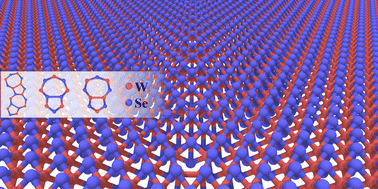Role of tilt grain boundaries on the structural integrity of WSe2 monolayers†
Abstract
Transition metal dichalcogenides (TMDCs) are potential materials for future optoelectronic devices. Grain boundaries (GBs) can significantly influence the optoelectronic properties of TMDC materials. Here, we have investigated the mechanical characteristics of tungsten diselenide (WSe2) monolayers and failure process with symmetric tilt GBs using ReaxFF molecular dynamics simulations. In particular, the effects of topological defects, loading rates, and temperatures are investigated. We considered nine different grain boundary structures of monolayer WSe2, of which six are armchair (AC) tilt structures, and the remaining three are zigzag (ZZ) tilt structures. Our results indicate that both tensile strength and fracture strain of WSe2 with symmetric tilt GBs decrease as the temperature increases. We revealed an interfacial phase transition for high-angle GBs reduces the elastic strain energy within the interface at finite temperatures. Furthermore, brittle cracking is the dominant failure mode in the WSe2 monolayer with tilted GBs. WSe2 GB structures showed more strain rate sensitivity at high temperatures than at low temperatures.



 Please wait while we load your content...
Please wait while we load your content...